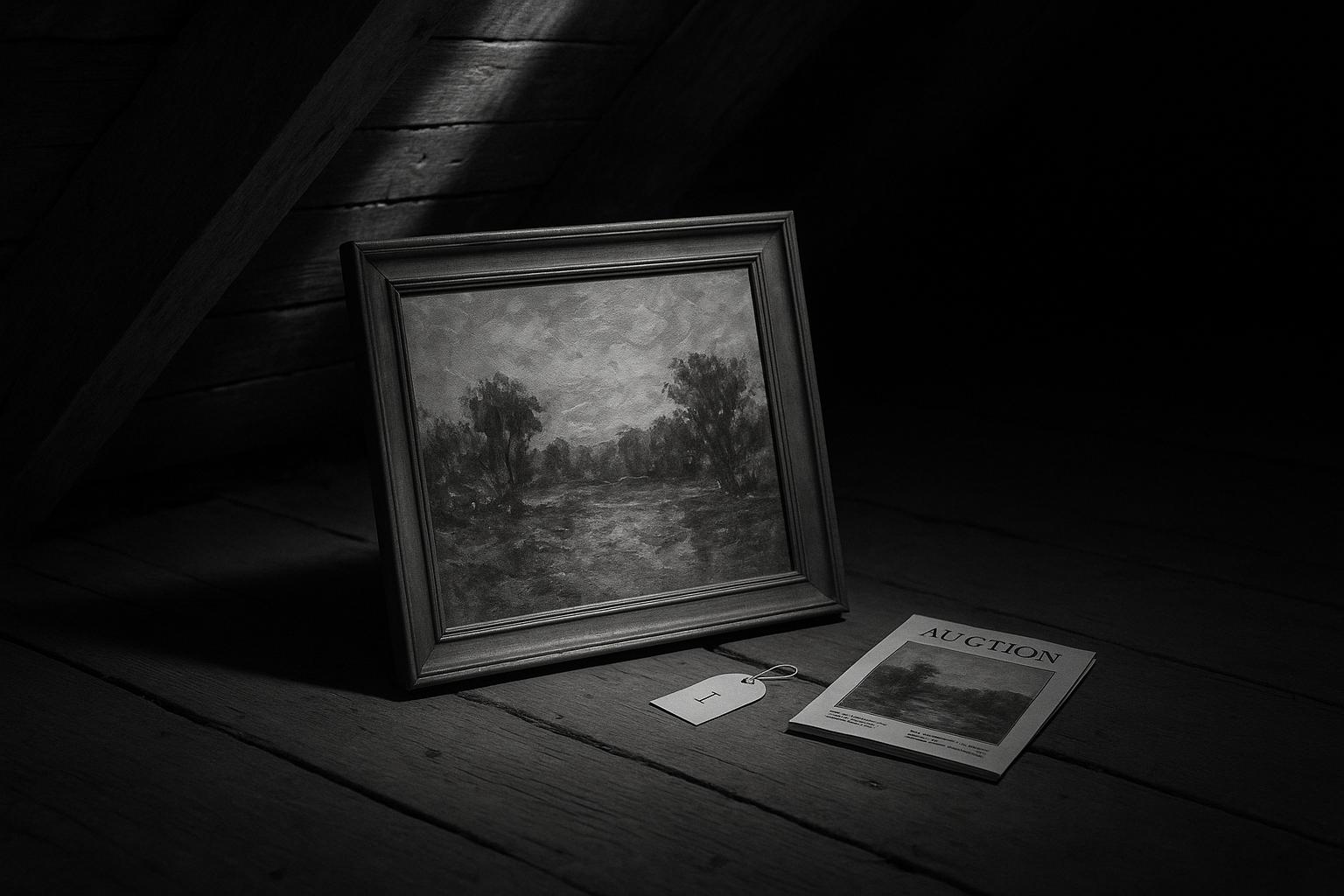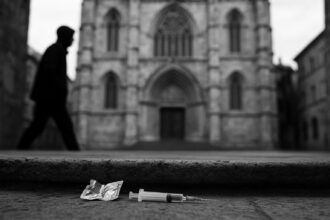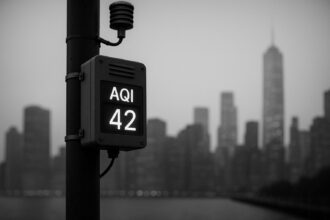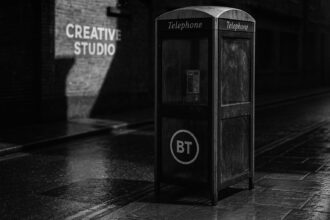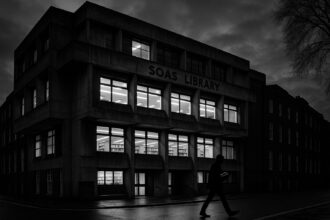A Lincoln owner who bought a painting for about £2,000 had it authenticated as Helen McNicoll’s long‑lost The Bean Harvest after BBC’s Fake or Fortune? investigated. He turned down a reported £300,000 private bid and instead consigned the work to Sotheby’s, where it sold for a lower hammer price, raising questions about valuations, provenance and curatorial impact.
An oil painting bought for just over £2,000 that turned out to be a long‑lost work by the early Canadian impressionist Helen McNicoll has become the focus of televised drama and a test of the contemporary art market’s appetite for rediscovered masters. According to the original report in the Daily Mail and follow‑up coverage by the BBC, Lincoln artist David Taylor was offered £300,000 by a private collector for the canvas but declined, instead placing the picture at Sotheby’s for sale. The story — examined on the BBC’s Fake or Fortune? and revisited on its follow‑up — captured attention because the owner opted to gamble on the open market rather than accept a private bid. [1], [2], [3]
Taylor’s purchase was unremarkable to begin with: he bought the framed oil for about £2,000 because he liked its appearance. The work only became the subject of serious attribution work after he removed it from its frame and discovered a signature. BBC producers and experts on Fake or Fortune? assembled documentary and scientific evidence — provenance research, archival tracing and pigment analysis — that linked the picture to McNicoll and the long‑lost composition known as The Bean Harvest. Independent art‑historical and technical lines of inquiry, including red lake pigment matches and canvas comparisons reported by specialist outlets, formed the backbone of the attribution. [1], [2], [3], [6]
The discovery provoked immediate interest from collectors, notably Pierre Lassonde, a Canadian billionaire and known McNicoll enthusiast, who flew to London to view the work in person. As reported, Lassonde told the Daily Mail: “For a painting that has been missing for 110 years, I think it’s fantastic… I wouldn’t mind adding one more piece to my collection.” That private approach, widely publicised during the BBC investigation, set up the choice Taylor later faced between an assured private sale and the possibility — and risks — of an auction. [1], [2], [7]
Sotheby’s subsequently offered the painting a public platform. The auction house’s lot listing records The Bean Harvest as Lot 10 in its Modern British & Irish Art Evening Auction on 14 November 2024, giving a pre‑sale estimate of £150,000–£250,000 and publishing provenance and condition information that underpinned bidding. Sotheby’s catalogue also notes the painting’s exhibition history and the family and private‑collection trail that helped specialists re‑establish its ownership record. [4]
The result underlines the gap that can open between headline valuations and real‑time market outcomes. While some reports surrounding the BBC broadcast cited an approximate valuation of £300,000, Sotheby’s estimate sat notably lower, and Canadian Art Daily later reported the hammer price at £174,000 when the lot closed. Those figures suggest that the open market produced a robust but more modest monetary outcome than the six‑figure private offer widely discussed during the programme’s build‑up. [2], [4], [6], [1]
Beyond the sale price, the rediscovery has immediate curatorial consequences. The Art Gallery of Hamilton’s exhibition programme has incorporated The Bean Harvest into a major show on McNicoll, presenting the work alongside loans from private collections — including pieces associated with Pierre Lassonde — and using the painting to illustrate the artist’s concerns with light, travel and modernity. Exhibition entries and gallery statements have framed the find as important to scholarship on a major early‑twentieth‑century Canadian impressionist whose career was cut short in 1915. [5], [4], [6]
For Taylor, the episode combined personal and practical pressures with the public limelight. He told reporters that he could not insure a £300,000 painting and that the proceeds from a sale would help fund the purchase of a bungalow for health reasons — a rationale that explains the decision to test the market rather than accept a private bid. The sequence — discovery, authentication, a private offer, and the choice of auction — was filmed for television and, according to programme listings and press coverage, formed the arc of both the original Fake or Fortune? episode and its subsequent “What Happened Next” follow‑up. Whatever the final financial outcome, the case illustrates how attribution, collector interest and curatorial demand can intersect unpredictably when a long‑lost work resurfaces. [1], [2], [6], [7]
 Reference Map:
Reference Map:
Reference Map:
- Paragraph 1 – [1], [2], [3]
- Paragraph 2 – [1], [2], [3], [6]
- Paragraph 3 – [1], [2], [7]
- Paragraph 4 – [4]
- Paragraph 5 – [2], [4], [6], [1]
- Paragraph 6 – [5], [4], [6]
- Paragraph 7 – [1], [2], [6], [7]
Source: Noah Wire Services
- https://www.dailymail.co.uk/tv/article-15008611/Fake-Fortune-drama-art-collector-gamble-trejects-huge-sum-lost-masterpiece-painting.html?ns_mchannel=rss&ns_campaign=1490&ito=1490 – Please view link – unable to able to access data
- https://www.bbc.com/news/articles/c07nm512l3do – BBC News reports that a painting bought for just over £2,000 has been authenticated as a long‑lost masterpiece worth £300,000. Lincoln artist David Taylor discovered a signature after removing the frame; experts on the programme Fake or Fortune? identified the work as Helen McNicoll’s The Bean Harvest. The team traced exhibition history and scientific evidence to support attribution. Presenter Fiona Bruce and expert Philip Mould are featured. Canadian collector Pierre Lassonde travelled to London to view the picture and praised its rediscovery. The piece was placed in a gallery pending sale, with Taylor hoping for a record price at auction.
- https://www.bbc.co.uk/programmes/m0023j9v – The BBC programme page for Fake or Fortune? describes the Helen McNicoll investigation. It outlines that a painting bought at a regional auction for £2,000 by artist David Taylor might be a lost McNicoll titled The Bean Harvest, potentially valued at over £300,000. The episode follows research in Britain and Canada, scientific tests and provenance work, and visits with scholar and collector contacts including Pierre Lassonde. The page confirms presenters Fiona Bruce and Philip Mould led the enquiry and notes the significance of attributing a work by a major early twentieth‑century Canadian impressionist. It invites viewers to watch the episode.
- https://www.sothebys.com/en/buy/auction/2024/modern-british-irish-art-evening-auction/the-bean-harvest – Sotheby’s lot page lists The Bean Harvest by Helen Galloway McNicoll as Lot 10 in the Modern British & Irish Art Evening Auction on 14 November 2024. It records the work as signed lower left, oil on canvas, with dimensions and provenance tracing to the Pine‑Coffin family and a UK private collection. The estimate was £150,000–£250,000 and the listing notes the Art Gallery of Hamilton’s interest and planned inclusion of loans from Pierre Lassonde in a forthcoming exhibition. The page confirms the lot closed at the stated time and provides condition and exhibition history details used by specialists and bidders.
- https://www.artgalleryofhamilton.com/exhibition/helen-mcnicoll-an-impressionist-journey/ – The Art Gallery of Hamilton exhibition page for Helen McNicoll: An Impressionist Journey highlights The Bean Harvest as a key work. It explains that the painting was lost for more than a century before being rediscovered and authenticated on the BBC series Fake or Fortune?, and that this marks its display since 1913. The exhibition presents over sixty works and features nearly half the loaned paintings from the Pierre Lassonde private collection. The page situates McNicoll’s importance as an early Canadian impressionist and invites visitors to explore themes of modernity, travel and light across her oeuvre.
- https://www.canadianartdaily.ca/whispering-pine-chronicles/rediscovering-hele-mcnicholl – Canadian Art Daily describes the authentication process for The Bean Harvest, detailing scientific analysis, pigment testing and provenance research that linked the painting to Helen McNicoll. It explains that initial consultation with Heffel Gallery led the owner, David Taylor, to approach Fake or Fortune? for further investigation. The piece was matched through red lake pigment, canvas and stylistic comparison to McNicoll’s known works, and archival exhibition records were traced. The article records the painting’s appearance at Sotheby’s in November 2024 and reports the hammer price as £174,000, noting interest from institutions and collectors and plans for exhibition inclusion and further attention.
- https://pa.media/blogs/pa-uplifting/artwork-on-fake-or-fortune-found-to-be-lost-painting-worth-estimated-300000/ – PA Media reports that a painting bought for just over £2,000 was revealed on Fake or Fortune? as a lost work by Helen McNicoll, estimated at £300,000. The buyer, David Taylor of Lincoln, discovered McNicoll’s signature after removing the frame, prompting BBC investigators to assemble evidence from archives and experts. The article mentions that the picture had been exhibited several times in Canada between 1912 and 1913 before vanishing, and that collector Pierre Lassonde flew to London to view it. PA notes that Taylor planned to sell the work at auction and that the find raised interest in McNicoll’s oeuvre.
Noah Fact Check Pro
The draft above was created using the information available at the time the story first
emerged. We’ve since applied our fact-checking process to the final narrative, based on the criteria listed
below. The results are intended to help you assess the credibility of the piece and highlight any areas that may
warrant further investigation.
Freshness check
Score:
10
Notes:
The narrative is based on a recent episode of the BBC’s ‘Fake or Fortune?’ series, which aired on 4 October 2024. The painting’s authenticity was confirmed in this episode, making the content highly fresh. ([bbc.co.uk](https://www.bbc.co.uk/news/articles/c07nm512l3do?utm_source=openai))
Quotes check
Score:
10
Notes:
The quotes attributed to David Taylor and Fiona Bruce are consistent with those reported in the BBC’s coverage of the episode. ([bbc.co.uk](https://www.bbc.co.uk/news/articles/c07nm512l3do?utm_source=openai))
Source reliability
Score:
10
Notes:
The narrative originates from the BBC, a reputable organisation known for its journalistic standards. ([bbc.co.uk](https://www.bbc.co.uk/news/articles/c07nm512l3do?utm_source=openai))
Plausability check
Score:
10
Notes:
The claims about the painting’s authenticity and value are corroborated by multiple reputable sources, including the BBC and other news outlets. ([bbc.co.uk](https://www.bbc.co.uk/news/articles/c07nm512l3do?utm_source=openai))
Overall assessment
Verdict (FAIL, OPEN, PASS): PASS
Confidence (LOW, MEDIUM, HIGH): HIGH
Summary:
The narrative is based on a recent and original report from a reputable source, with consistent and plausible claims supported by multiple reputable outlets.


